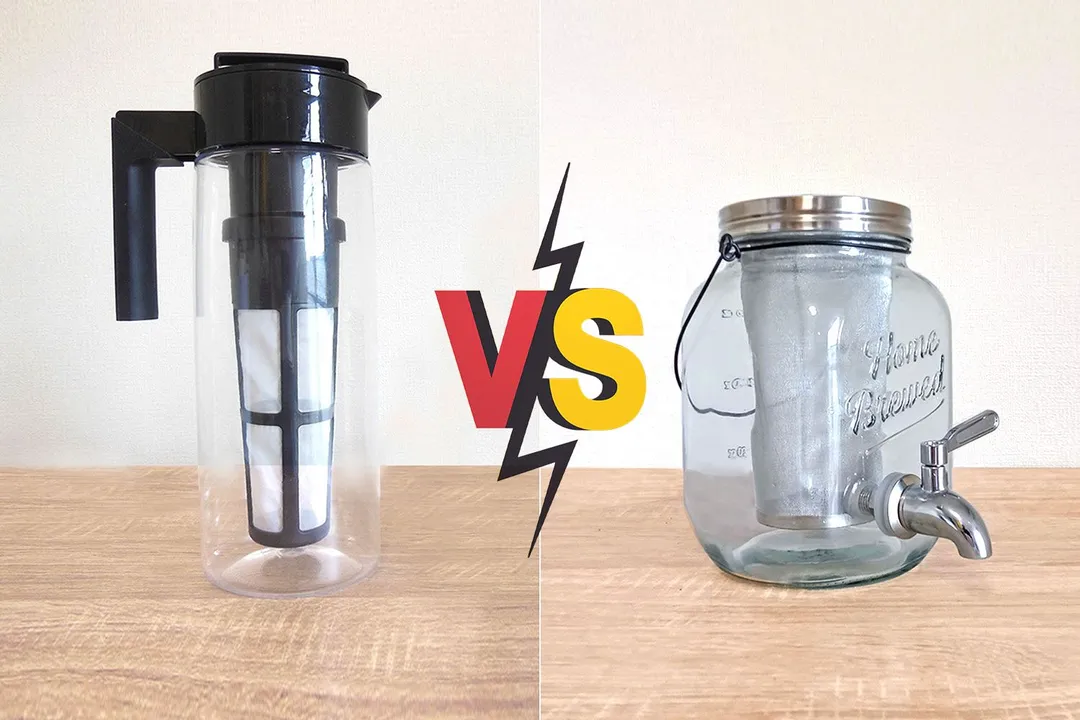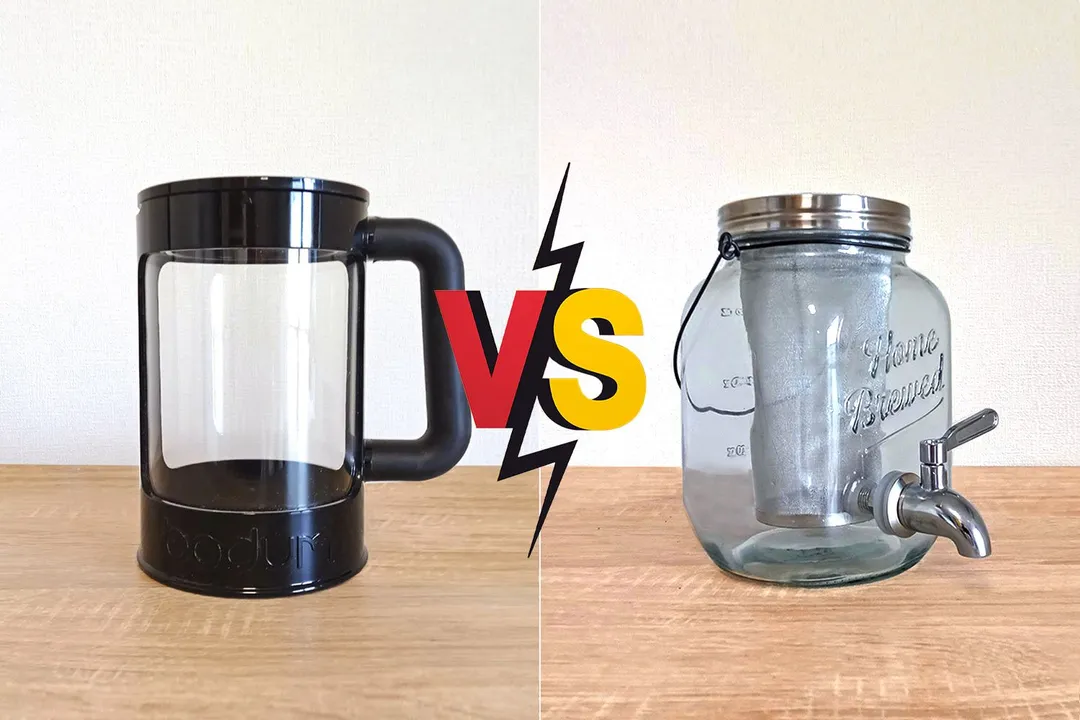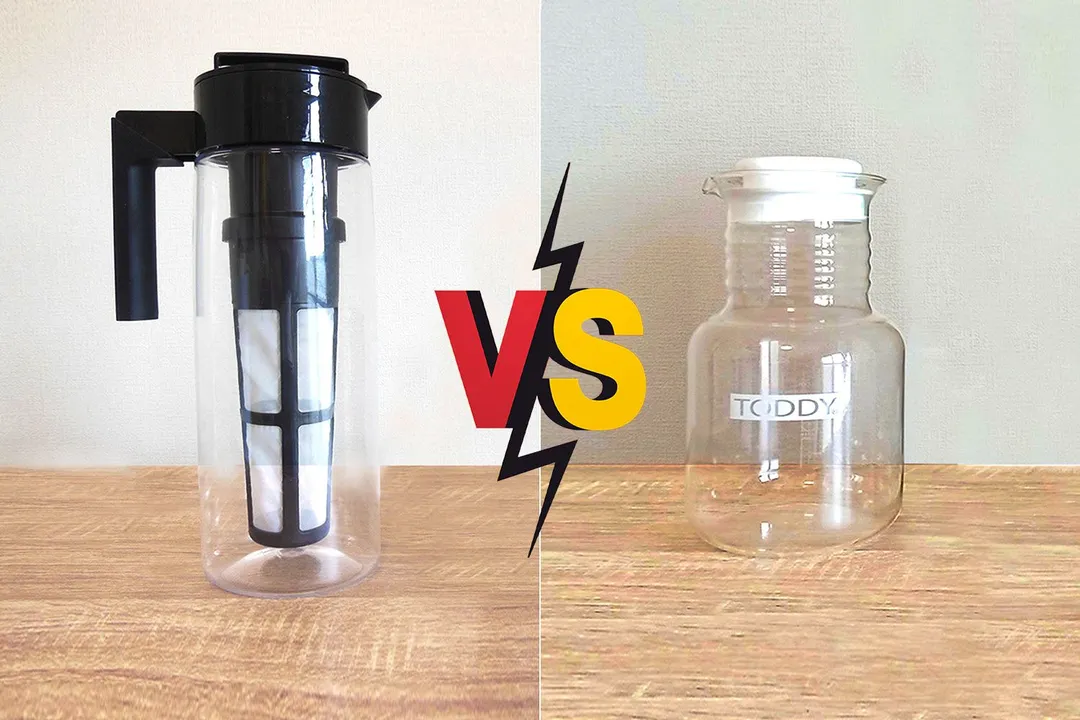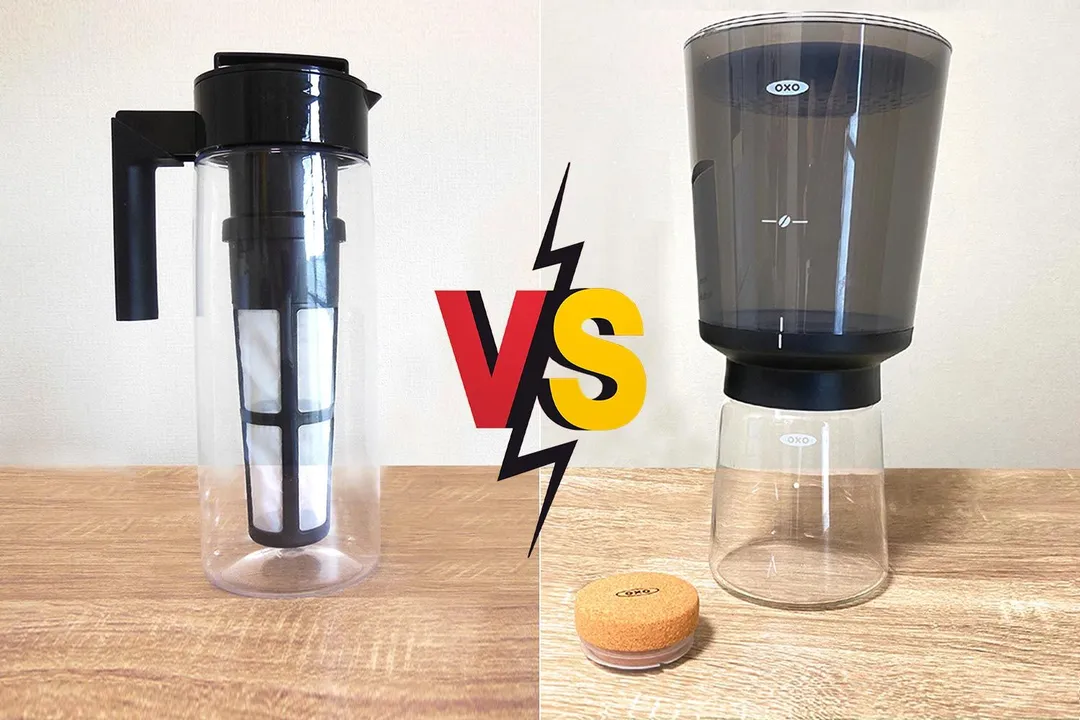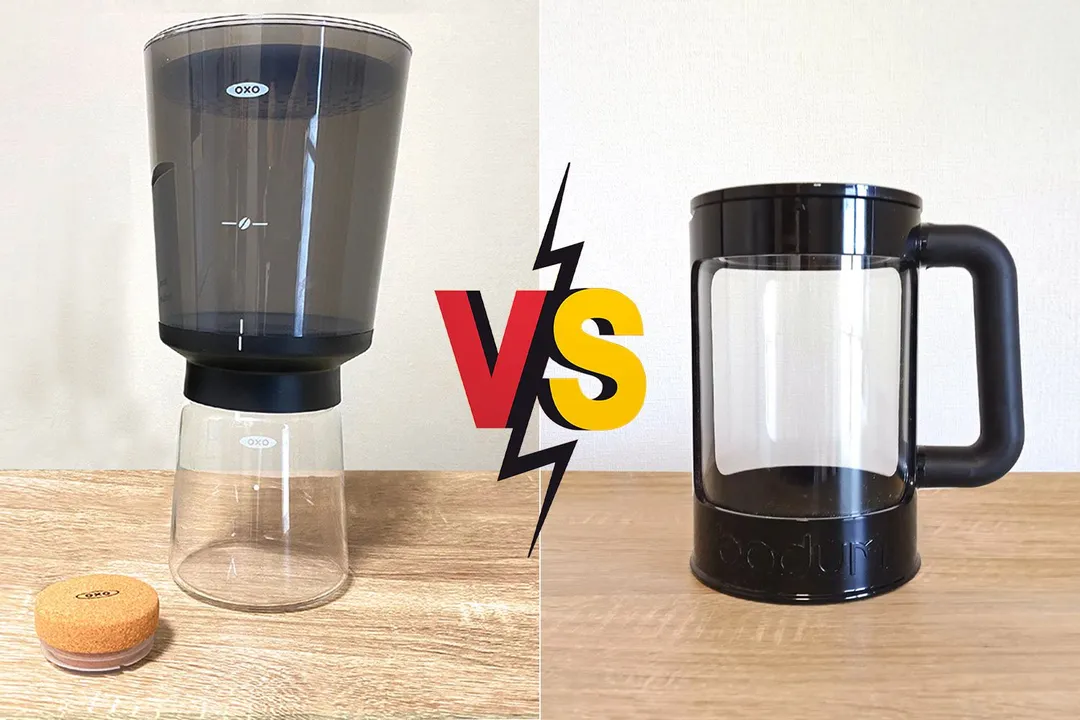Our recommendations are made independently through Research & Testing. We may receive commissions from purchases made via our links.
Takeya vs Bodum Side-by-Side Comparison
The Takeya cold brew coffee maker vs Bodum French press. A unique in-door brewer and free-style brewing à-la French press.
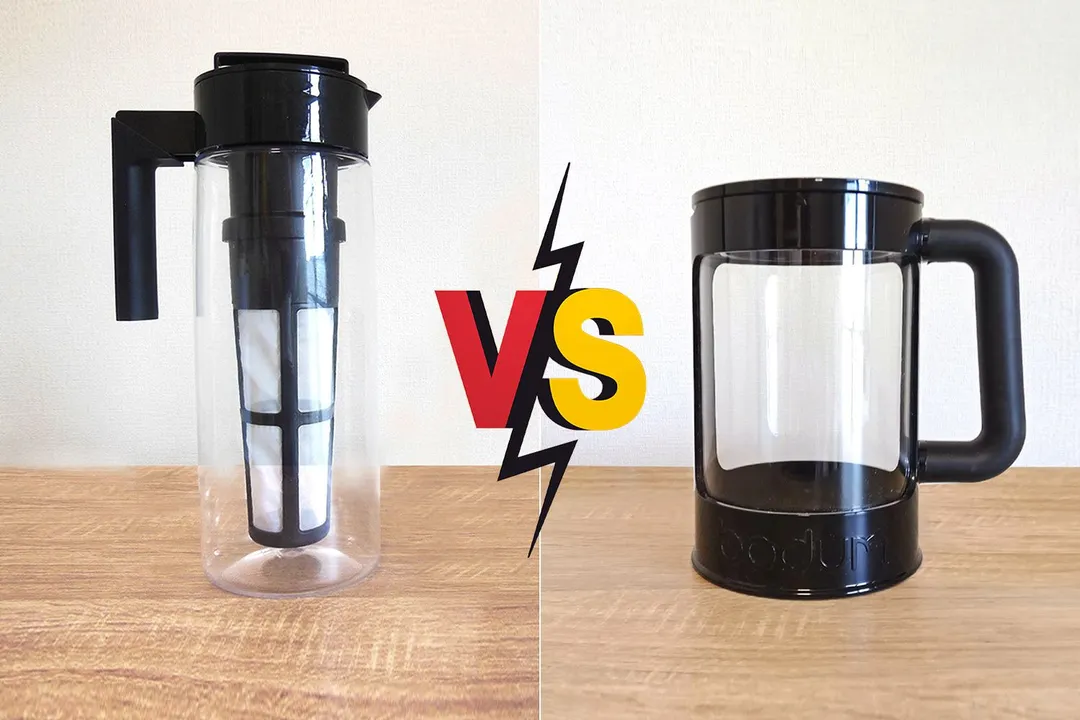
Overall Verdict
The Takeya and Bodum both stand out in how their filters work. The Takeya has a unique immersion filter that screws into the lid. During brewing it is even recommended to shake the vessel a few times. Its complete spill-proof design also means you can brew in most refrigerator doors or lie the vessel on its side on a shelf.
Whereas the Takeya, for an immersion filter brewer, has a fixed brew ratio of 1:9 the Bodum is a free-style brewer. For the Bodum, you can easily deploy a 1:4 brew ratio which produces a full strength cold brew concentrate. The French press style plunge filter works effortlessly and effectively.
The only drawback to the Bodum is that you have to provide your own carafe if you wish to fully decant the brew after deploying the plunge filter. Both brewers are made of plastic. The Takeya is high-grade Tritan plastic made in the USA, and the Bodum is BPA-free made in Portugal.
Pros & Cons
- Air tight brew decanter
- Cold or hot (tea) brewing
- BPA-free
- Dishwasher safe
- Durable & light weight
- 1 and 2 quart sizes
- Color choice
- Light and durable
- Open/close spout
- Perfectly airtight
- Comfortable handle
- Freestyle brewing
- Made in Portugal
- Inadequate packaging
- Included instructions inadequate
- Filter cleaning
- Decanting can be tricky
- No measuring guides
Key Specs
Where to Buy
*You help support HealthyKitchen101's product testing and reviews by purchasing from our retail partners.
Analysis and Test Results
Brew Quality
Bouquet
Drinkability


Sediment

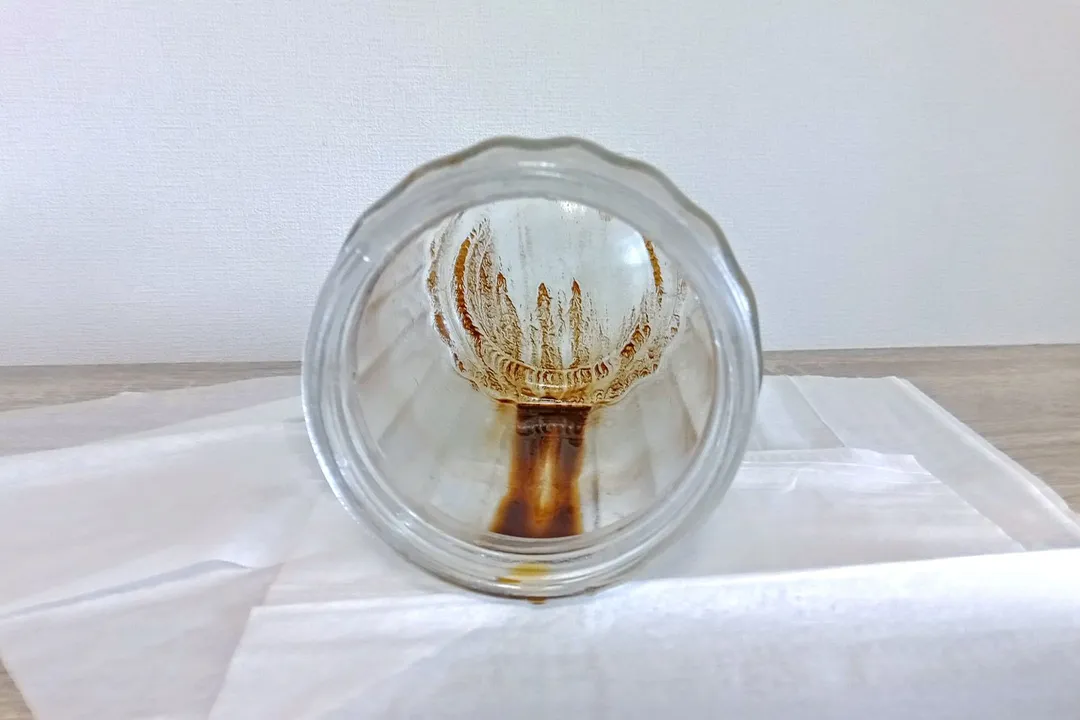
Design
In the Box

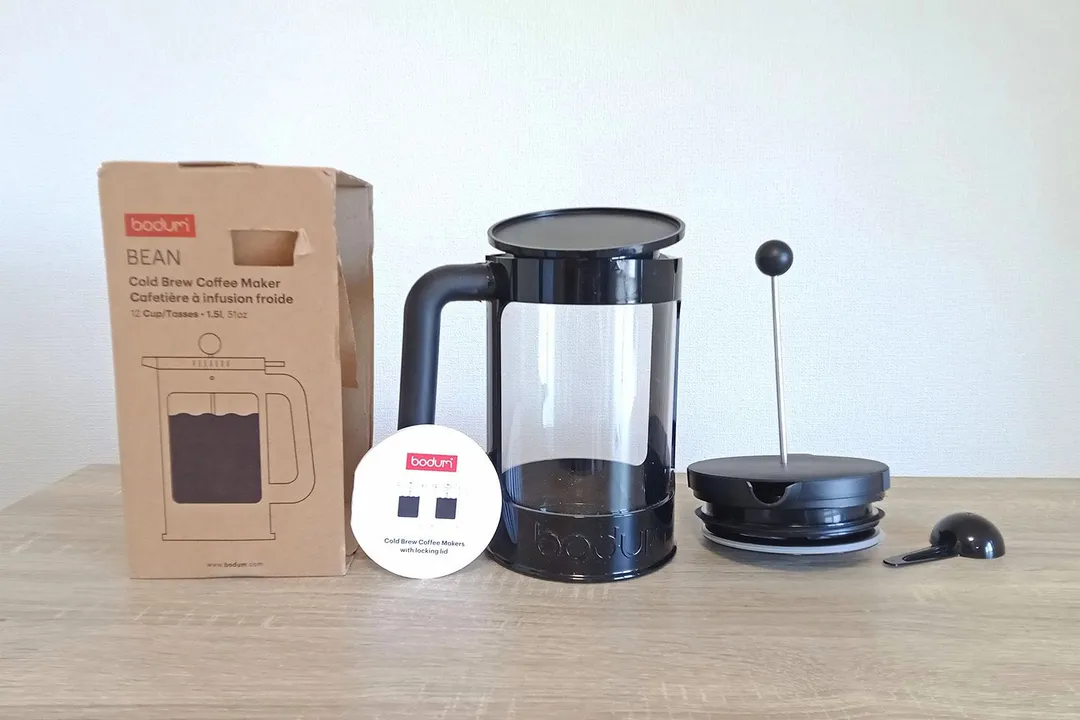
Decanter
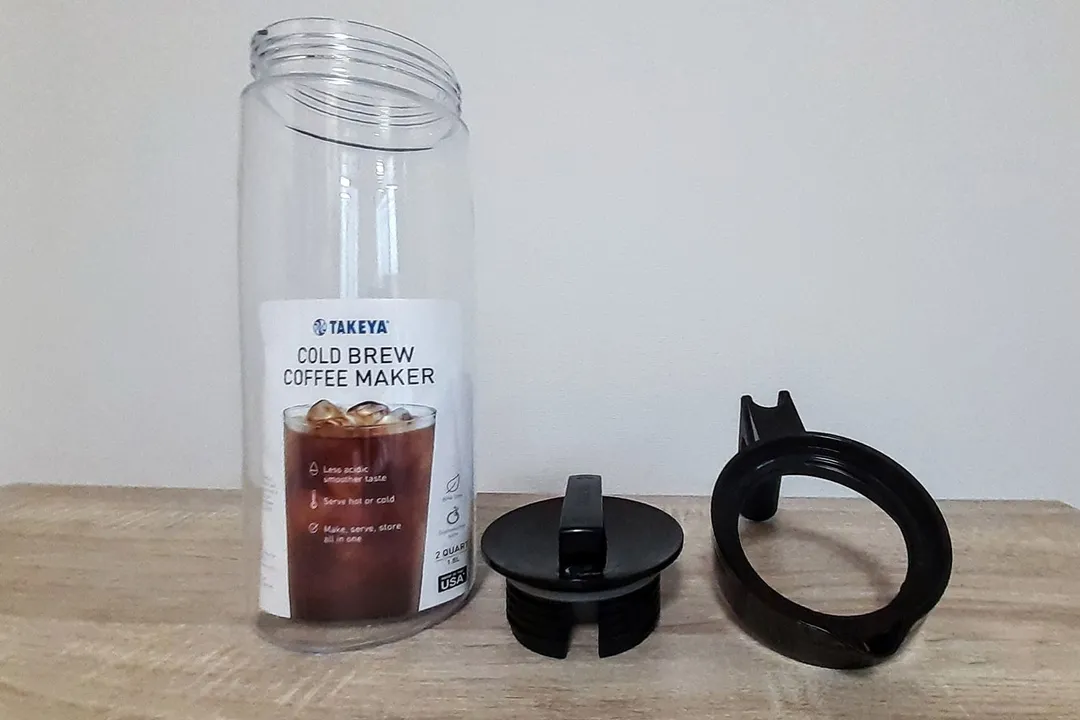
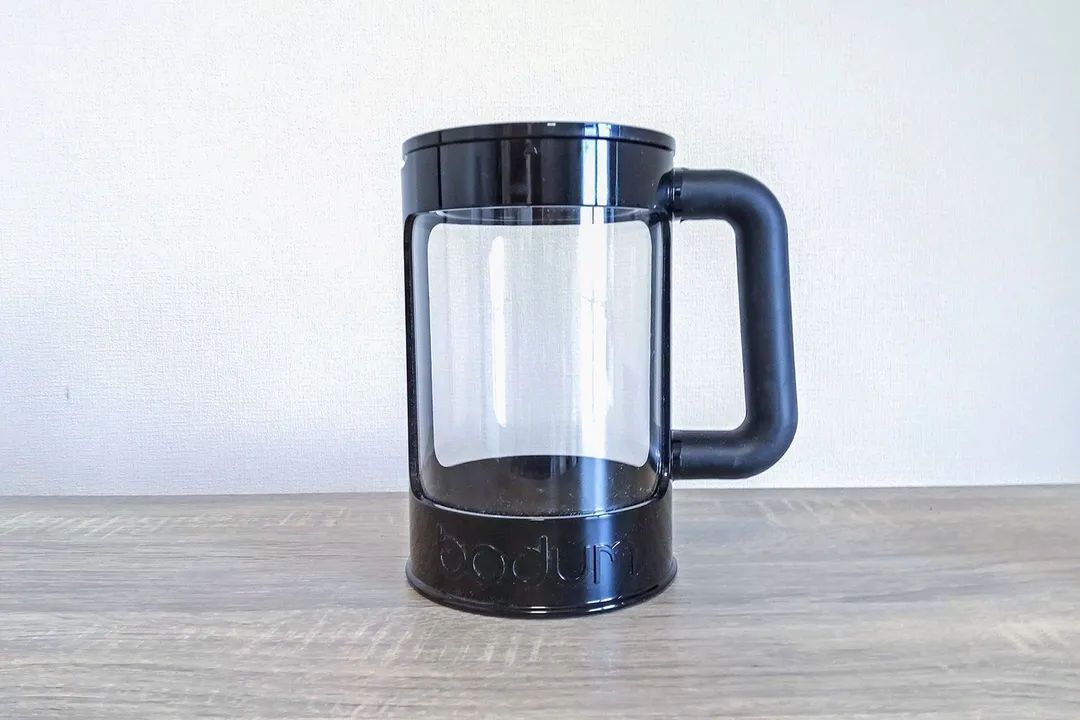
Stopper / Lid

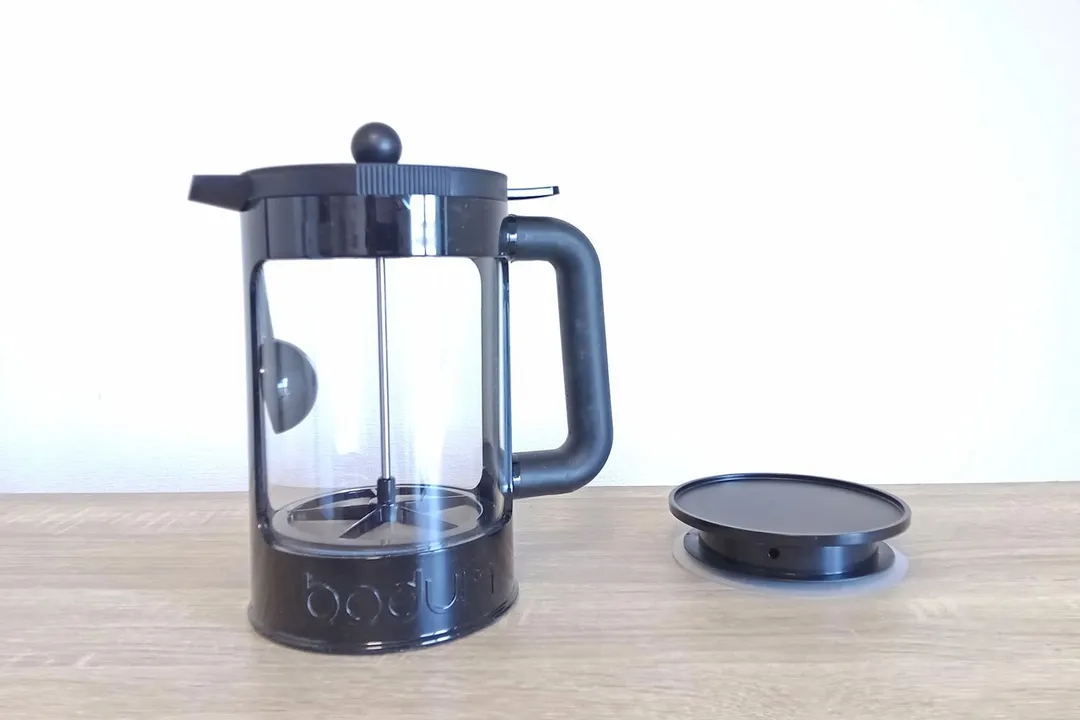

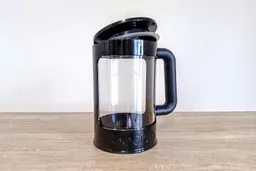
Filter

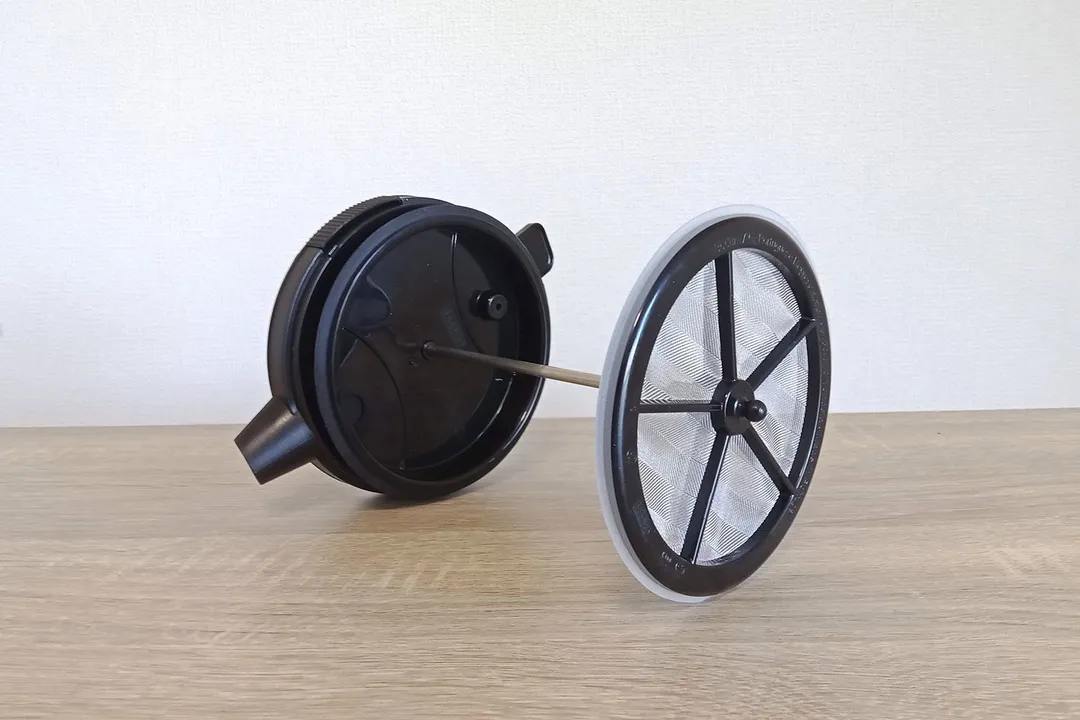
Build Quality

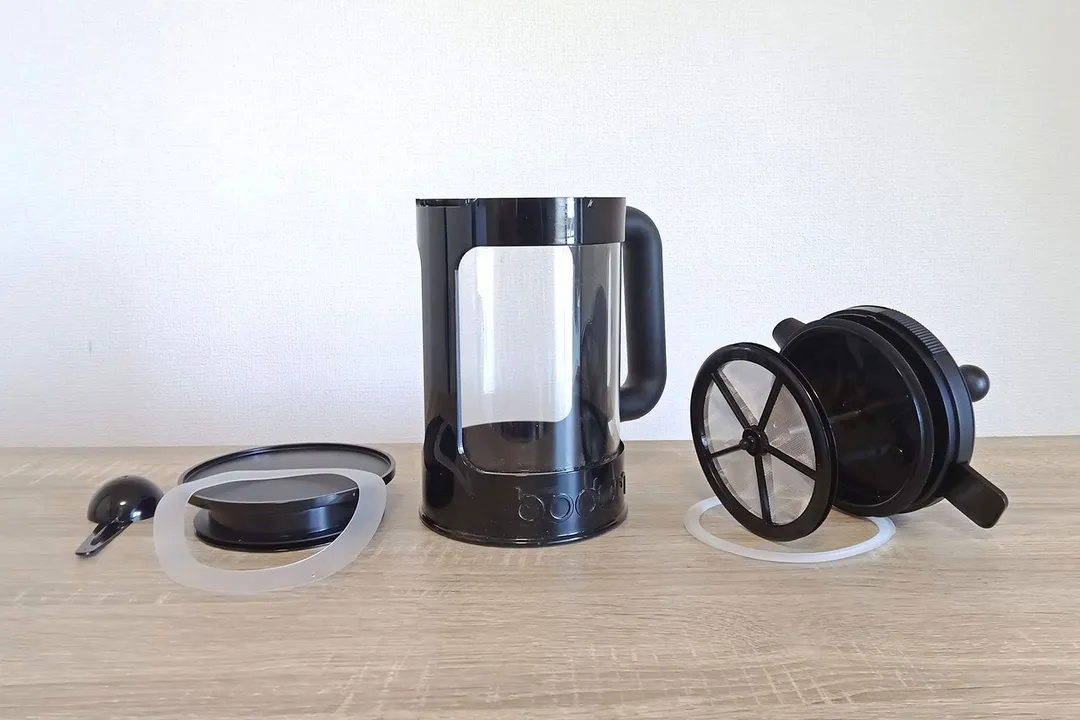
Usability
Brewing
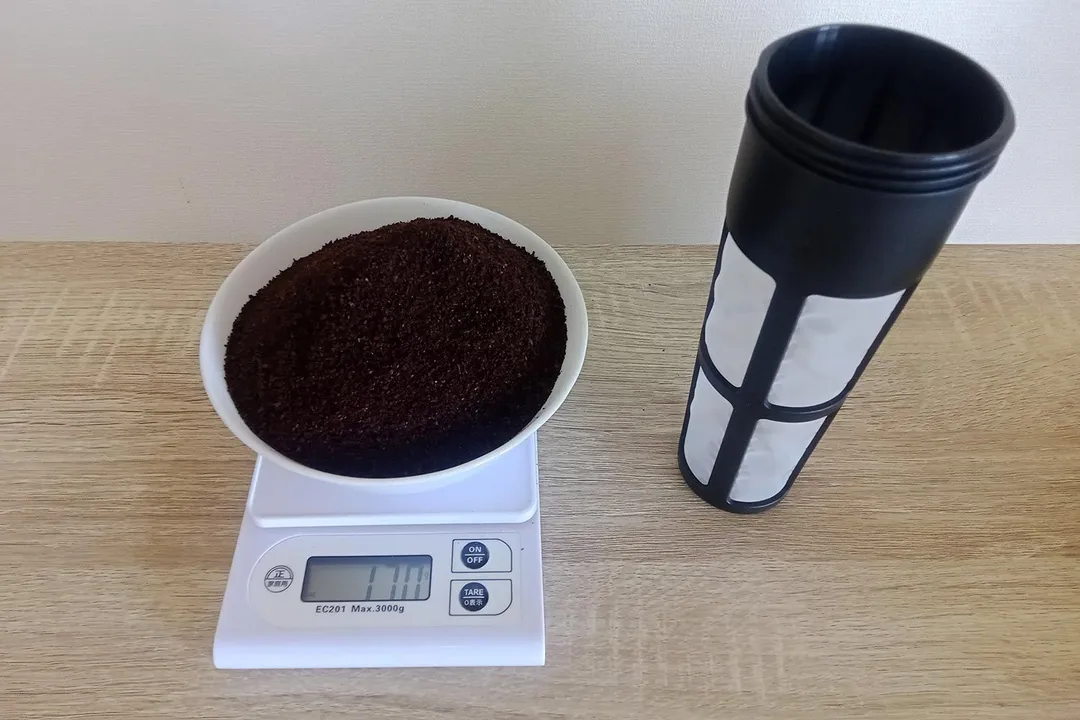
Decanting
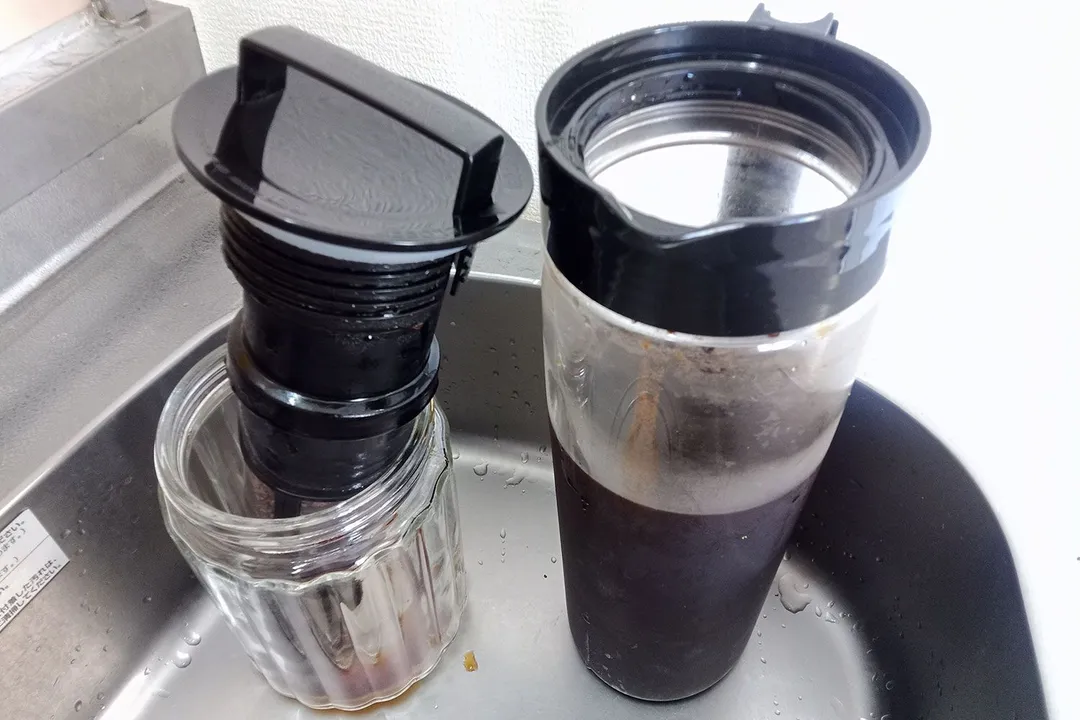
Cleaning and Storage
Behind the Comparison
Roger Shitaki is a writer, author, and editor. His niches are household appliances, health & wellness, and travel. He’s a freelance contributor to a Tokyo lifestyle website and a leading ophthalmology magazine in Asia.

